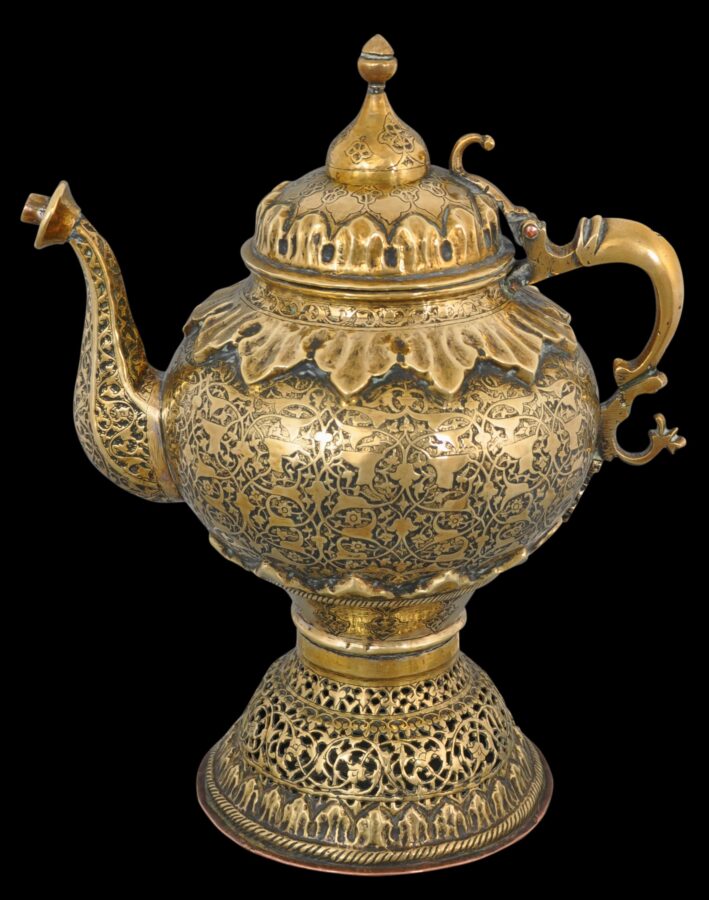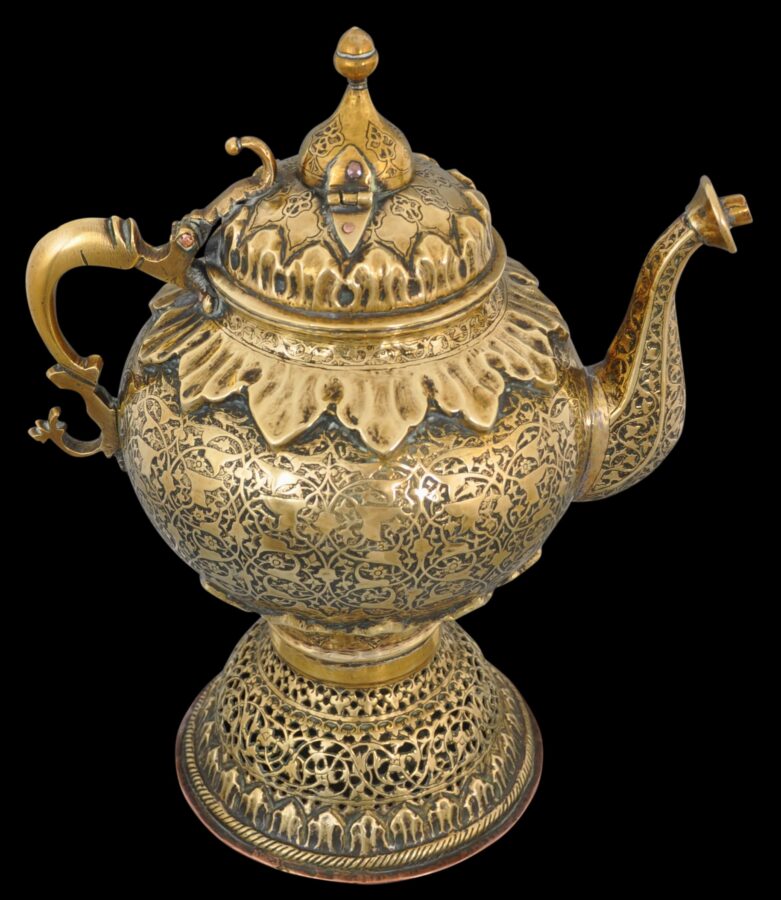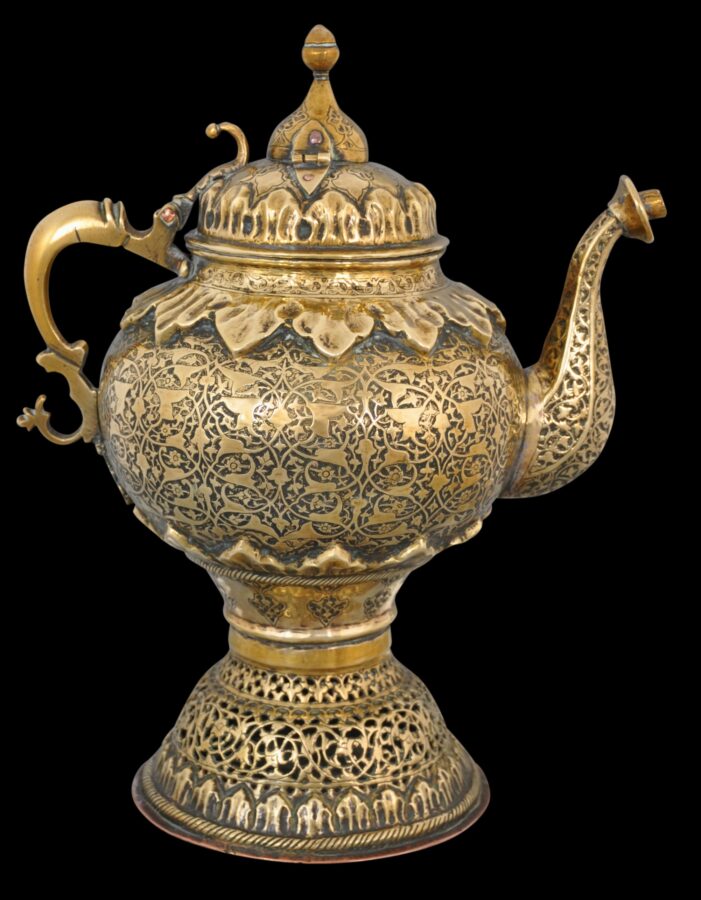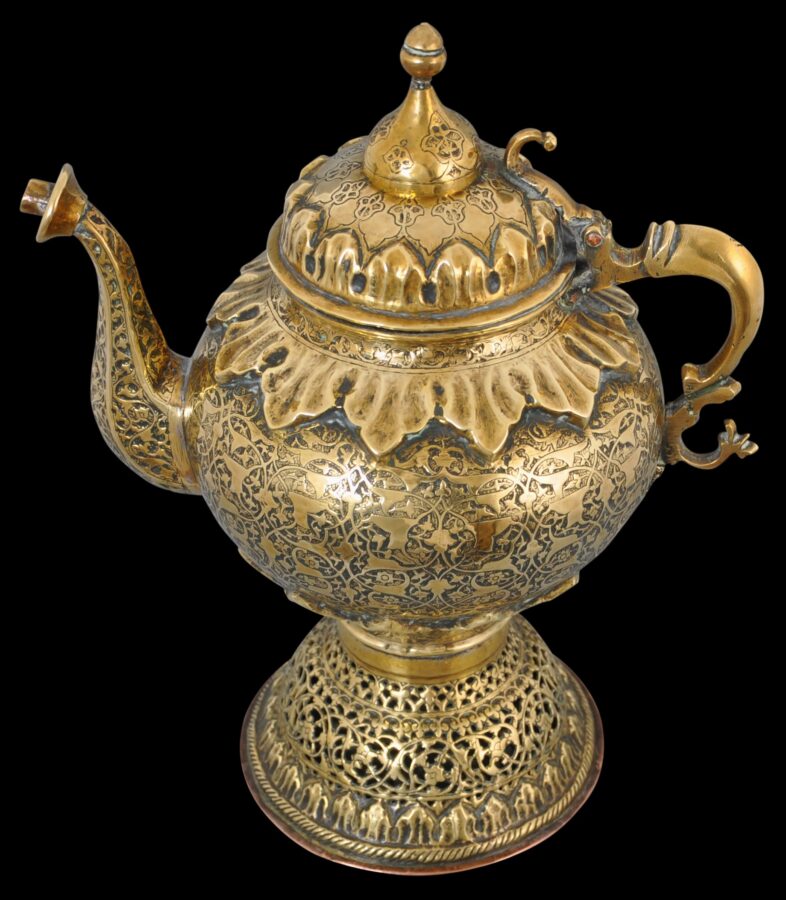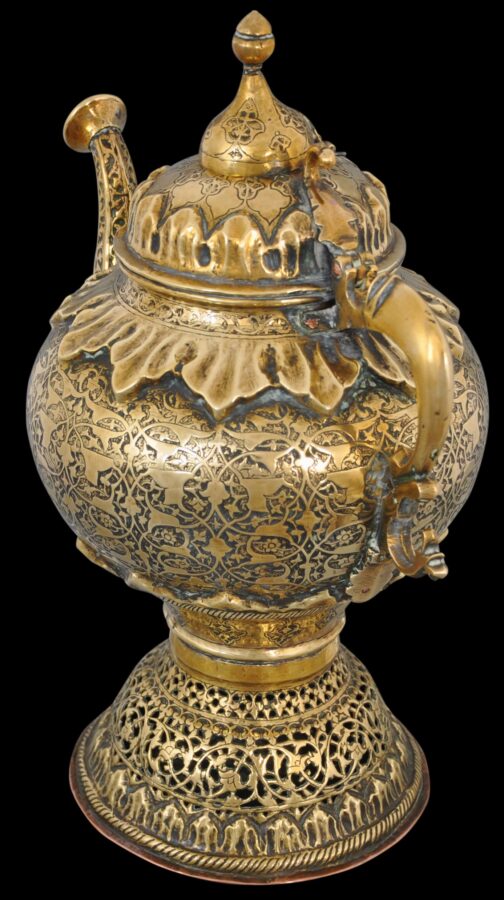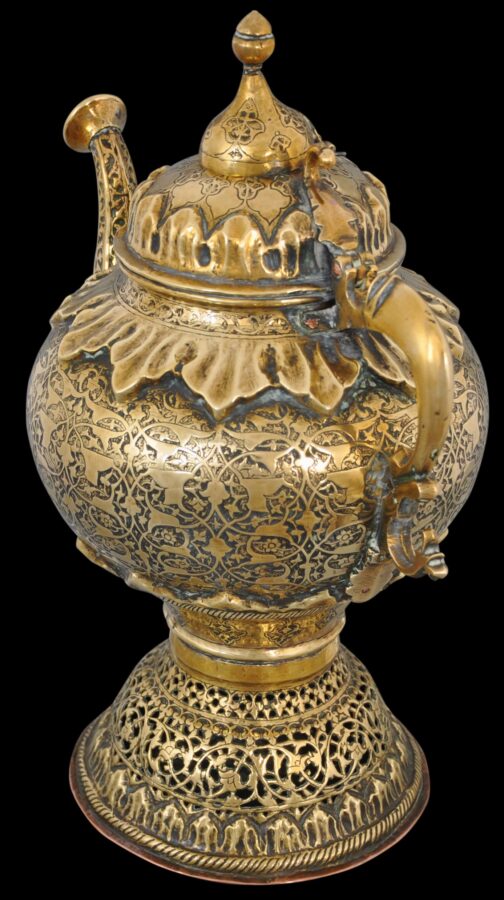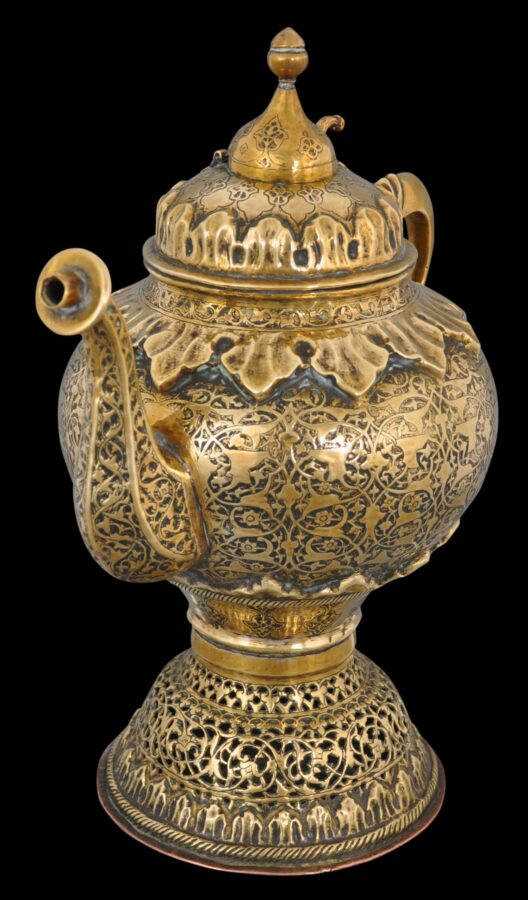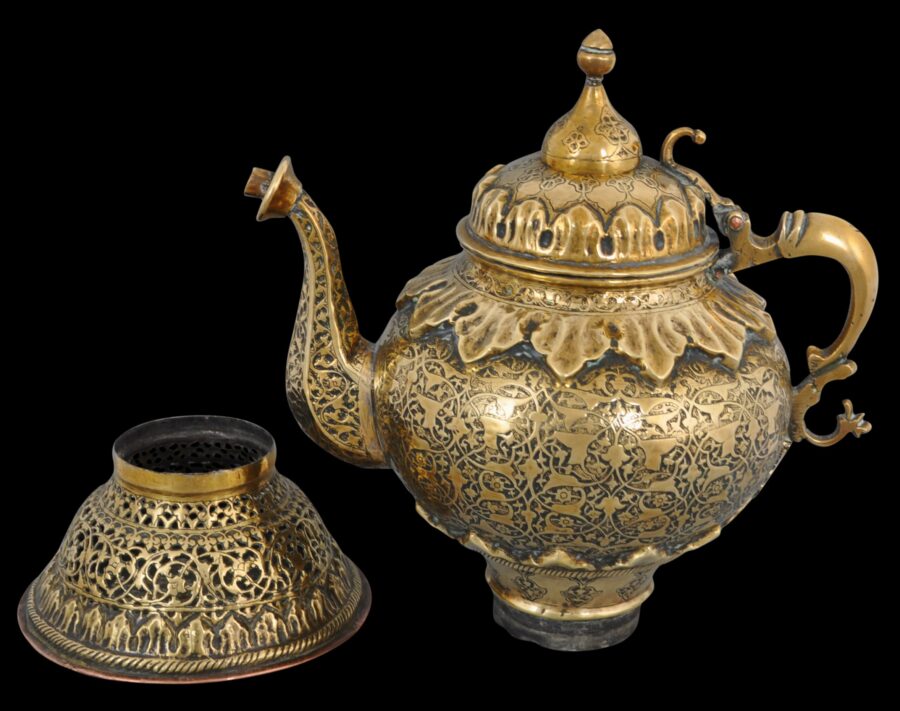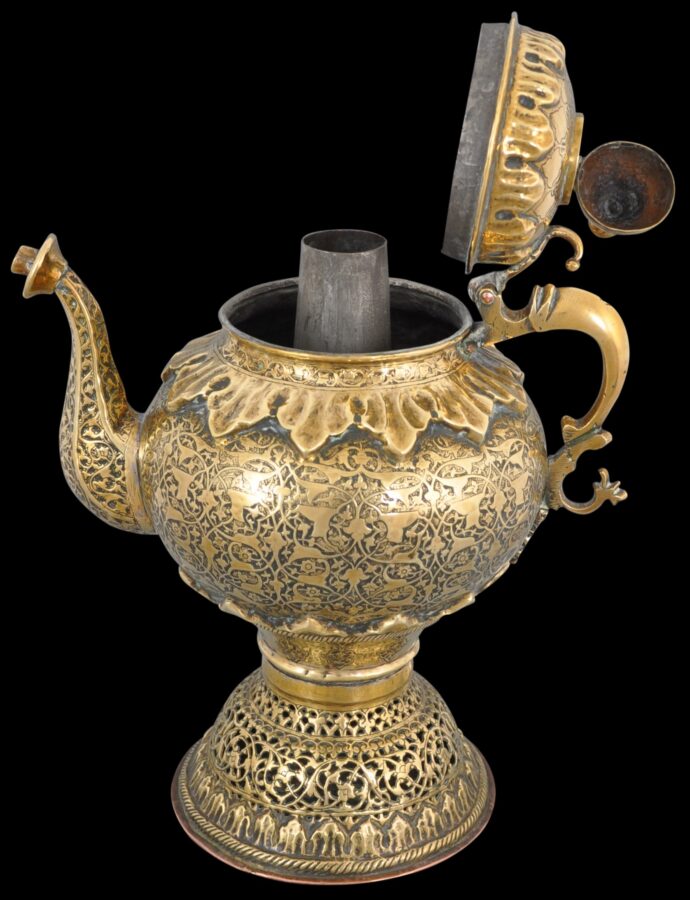This rare and sculptural ewer actually functions as a samovar. The lift lids to reveal a central, interior ‘chimney’ into which hot coals were added. This has a grill at its base which allows ash to fall into the pierced, raised foot which is removable as well as being very decorative. Liquid was put into the spherical body of the samovar around the chimney, which could then be heated or kept hot.
The hinged lid is domed, and has a smaller hinged lid on top which would allow coals to be added. There is an ‘S’-shaped spout and a matching handle which is vaguely zoomorphic.
Much of the surface has been chased with arabesques and split leaf palmettes in a dense and swirling fashion which is more Deccan than Persian. So too are the bold leafy friezes cast in high relief around the top and bottom of the body of the samovar and the back of the primary lid.
A related vessel is illustrated in Zebrowski (1997, p. 152) and that example – a ewer – is signed by the maker or owner and is attributed to circa 1600, Iran or the Deccan, India. The vessel might also be attributed to Central Asia – to Bukahara or thereabouts – where there certainly was a culture of samovar use, but the decoration brassware there generally lacks the same profuse vigorous use of wide arabesques. In any event, the designs in Bukhara tended to be influenced by metalwork from Kashmir and the rest of northern India, rather than the other way around.
The samovar is in fine condition with obvious age and without dents of or losses.
References
Kalter, J. (ed.), Uzbekistan: Heirs to the Silk Road, Thames & Hudson, 1997.
Zebrowski, M., Gold, Silver & Bronze from Mughal India, Alexandria Press, 1997.


